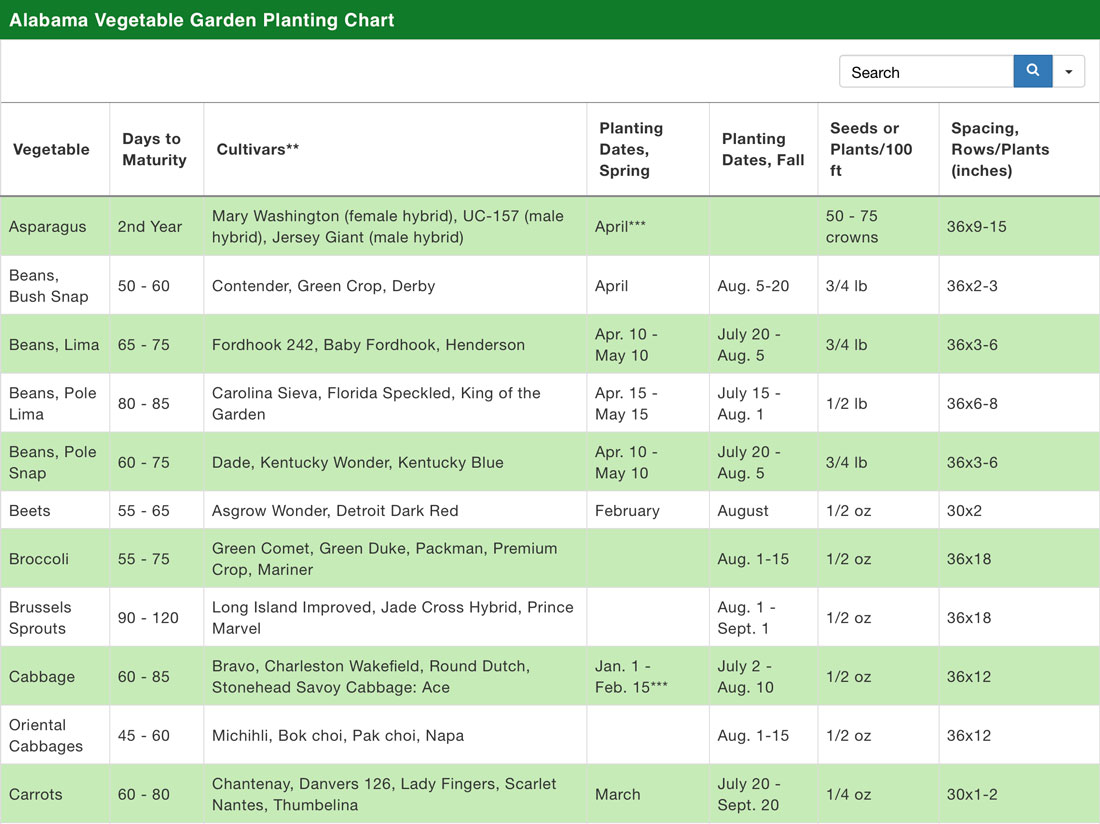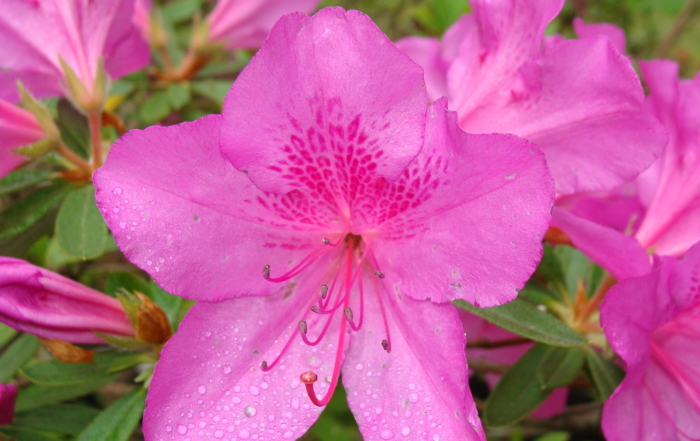Successful harvests begin with smart planning. Growing your own vegetables is a fun and addictive hobby that can turn into a daily way of life, yielding flavorful food and encouraging you to try growing more plants. You may be feeding the neighborhood in no time!
Site + Soil: Whether growing in containers, raised beds, or incorporating edibles within your landscape, setting up the basic needs is the first step. Spend time preparing healthy soil and siting your garden spot in an area that receives at least six hours of sun daily.
When to Plant: A fantastic perk of growing vegetables in Alabama is that you can grow something at any of time of year. Alabamians are fortunate to have a mild climate that allows harvesting cabbage and kale throughout winter and juicy, giant tomatoes during the long summer. But how do you know when to plant each type of vegetable? When growing most perennials and shrubs, it’s important to choose plants that are known to perform well in our region’s specific USDA hardiness zone. However, most vegetables are annual plants surviving only one season. The key is to plant within its ideal temperature range. A region’s frost dates are based on annual averages of when the last frost of the spring occurs and the first frost in fall happens. Gardeners use these as a guide to determine when it’s safe to plant tender vegetables that prefer warmer soil and longer sunny days. For instance, Birmingham is reported to have a last frost date of April 3 and a first frost date of November 5, giving about 215 days for warm season crops such as tomatoes, peppers, cucumbers or pumpkins to thrive. Using this planning method is also helpful when looking at the other key information for growing vegetables: days to maturity. When reading plant labels and seed envelopes, consult the “days to maturity” to know how long the plant will take to produce its first harvest. For late summer plantings, this is particularly helpful in counting backwards from the first frost date and knowing how long you’ll need for peas or pumpkin vines to flush out a crop before Jack Frost appears.
What to Plant: The options of what to plant are nearly infinite, especially if you are shopping the seed rack at your local garden center or seed catalogs with hundreds of enticing options. Garden shops stock wonderful selections of vegetables and herb plants in 4-5” pots that give you a convenient jumpstart, saving time from starting your own from seed.
One excellent benefit of growing your own food is the almost limitless options you have beyond the one type of jalapeno or orange carrot at the local supermarket. If you’ve grown the usual favorites and are looking for vegetable selections that are fun and funky, read our top picks for warm season gardens and favorite selections for cool season plantings.
Vegetable Planting Guide: A resource that you will want to bookmark, print and save to use again and again is the Alabama Vegetable Planting Guide provided by the Alabama Cooperative Extension System. Armed with this, your garden will rival Mr. McGregor’s storybook potager. The guide summarizes how to get started with the right preparation and maintenance for food gardening, and excels in delivering exact details of when to plant each type of crop. Local Extension coordinators are wonderful resources for learning more about caring for your home and garden, providing helpful publications and hosting seminars throughout Alabama. Have a question you need answered right away? The Alabama Master Gardener Helpline keeps knowledgeable volunteers on call at 1-877-252-4769.





